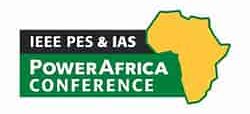Smart city panel
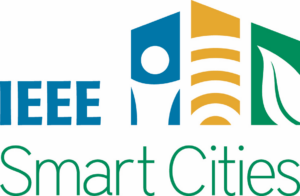

——————-
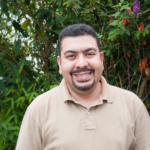
Date: d xxrd , 2023
Title: “Achieving the best energy-efficiency and occupant comfort trade-off in smart buildings: Combining IoT and AI/ML is the cornerstone of future smart and sustainable buildings and cities”
Abstract: Buildings are the biggest energy consumer sector. Occupants directly influence building appliances that consume energy. Understanding building occupant’s behavior can help minimize energy consumption while satisfying occupants’ comfort. Starting from these three interrelated postulates, the question that arises is whether building data could be used as a means to reduce its energy consumption while maintaining at the same time the occupants’ comfort. In this talk, we will discuss how IoT data could be collected (type, frequency, …) in order to gather sufficient data about the occupants’ behavior and the building’s energy usage, but also how artificial intelligence, namely machine learning, could be used in order to achieve the best energy and comfort trade-off in smart buildings, while considering the occupant’s behavior. Our goal here is to show that combining IoT and AI/ML is the cornerstone of future smart and sustainable buildings and cities.
Short bio: Yacine Ghamri-Doudane is currently Full Professor at the La Rochelle University in France, and the Director of Laboratory of Informatics, Image and Interaction, L3i (~120 members + ~30 interns per year). Since January 2019, he also holds an Adjunct Professor position at the Walton Institute for Information and Communication Systems Science, South-East Technological University, SETU, Waterford, Ireland. Yacine received an engineering degree in computer science (M.Eng) from the National Institute of Informatics (INI), Algiers, Algeria, in 1998, an M.Sc. degree in signal, image and speech processing from the National Institute of Applied Sciences (INSA), Lyon, France, in 1999, a Ph.D. degree in computer networks from University Pierre & Marie Curie, Paris 6, France, in 2003, and a Habilitation to Supervise Research (HDR) in Computer Science from Université Paris-Est, in 2010. His current research interests lay in the area of wireless networking and mobile computing with a current emphasis on topics related to the Internet of Things (IoT), Connected and Autonomous Vehicles, Smart Building as well as Digital Trust. Yacine holds three (3) international patents and he authored or co-authored eight (8) book chapters, 50+ peer-reviewed international journal articles and about 180 peer-reviewed full conference and workshop papers. Since 1999, he participated or still participates to several national and European-wide research projects in his area of interests. Among them five regional research projects (three ongoing), five national-wide research projects (two ongoing), fourteen European-wide or International-wide research projects (four on-going) as well as three EU COST Actions. He also held several industrial funding with companies like Orange, Nokia, Renault, OODrive, Soft@Home (Orange Group) and PANGA. As part of his professional activities linked to the computer networking research community, Yacine also acts as the Chair of the IEEE Smart Cities Technical Community 2.0 Meetings and Conferences Committee since May 2022. He is also member of the GLOBECOM/ICC Technical Content (GITC) Standing Committee within IEEE Communications Society (ComSoc). Previously, he acted as the Chair of the IEEE ComSoc Technical Committee on Information Infrastructure & Networking (TCIIN – previously TCII) from January 2010 till December 2013 and also chaired the IEEE ComSoc. Humanitarian Communications Technologies Ad hoc Committee (HCTC) from January 2012 till December 2015. He was also part of the IEEE Smart Cities Initiative Steering Committee from 2014 to 2017 as well as since 2022. He is or had been an editorial board member of the IEEE TVT (ongoing), Elsevier JNCA, Elsevier ComNet, Springer AoT Journals, Wiley WCMC, Guest Editor of IEEE ComMag, IEEE IoT Journal, Springer/EURASIP WCN Journal, co-Editor in Chief of the Elsevier/KICS ICT Express Journal (ongoing) as well as the founding Editor-in-Chief of the IEEE ComSoc Ad Hoc and Sensor Network Technical Committee (AHSN TC) Newsletter. Among other conference involvements, he acted or is still currently acting as the TPC Chair of IEEE LatinCom 2022, IEEE MeditCom 2021, IEEE/IFIP IM 2021, and IEEE CCNC 2015, Symposium co-Chair in IEEE ICC 2009, 2010, 2012, 2018, and 2021 as well as IEEE GLOBECOM 2012 and 2015, Workshop co-Chair for IEEE GLOBECOM 2023 and finally Track co-Chair in IEEE CCNC 2023 and 2024 as well as in IEEE Sensors 2022 and 2023. He is a Senior Member of the IEEE. (CV & Bio: http://goo.gl/6wnUvJ)
——————-
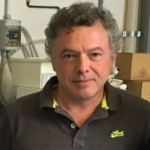
Date: d xxrd , 2023
Title: “Matlab modeling of a university campus microgrid”
Abstract: The University of Parma South Campus (UPSC), which hosts 4 departments and 10 research centers, as well as recreational and sports facilities, cafeterias, etc., on the average day of a teaching semester accessed by some 10,000 people, is undergoing a transformative phase from the point of view of energy generation and consumption. The installation of 677 kWp of photovoltaic (PV) power generation and ten charging stations for electric vehicles (EVs) marked the beginning of a process that should see, in the next few years, upscaling of PV generation capability, BESS deployment, commissioning of a power-to-gas plant for hydrogen production and conversion into methane, and the installation of a metering network to monitor and control the energy grids (electrical and thermal). The electric MG will be integrated with the thermal grid into a smart energy grid for optimized performance and efficiency. In this context, modeling plays a key role for planning and analysis. To this purpose, we developed a library of microgrid (MG) component models integrated in a complete university campus MG model in the Simulink/MATLAB environment. The model allows simulations on widely varying time scales and evaluation of the electrical, economic, and environmental performance of the MG. The models include photovoltaic (PV) generation (with MPPT control), battery storage (including charge/discharge control), loads (campus buildings and outdoor lighting), electric vehicle charging stations, and interconnections. The campus MG model can be used for: (i) week-long simulations throughout the year, to analyze seasonal differences; (ii) year-long simulations for the estimation of the overall economic and environmental impacts; (iii) MG islanded-mode simulations. The model is an agile tool for planning the deployment and penetration of photovoltaic plants and battery storage, with consideration of economic and environmental (carbon footprint) aspects. Integration with thermal energy models into a single comprehensive energy district model is the ultimate goal.
Short bio: Roberto Menozzi (SMIEEE, 2008) received the Laurea degree (cum laude) in Electronic Engineering from the University of Bologna, Italy, in 1987, and the Ph.D. degree in Information Technology from the University of Parma, Italy, in 1994. From 1990 to 2016, he has been with the Department of Information Technology, University of Parma, where he became Assistant Professor in 1993, Associate Professor in 1998, and Full Professor in 2006. Since 2017, he is with the Department of Engineering and Architecture of the University of Parma. He spent research leaves with the Cardiff University, UK, (1991), the University of Michigan, Ann Arbor, MI, (1992), the University of Colorado, Boulder, CO, (1997), M/A-COM, Lowell, MA, (2003/04), the University of Western Australia, Perth, WA, (2006 and 2008). His research activity has covered the fields of CMOS latch-up and automated IC testing and compound semiconductor and heterostructure device characterization, simulation and reliability evaluation. He has been mostly concerned with hot electron issues in heterostructure devices on GaAs and InP such as HEMTs and HFETs, and with thermal characterization and modeling of semiconductor devices and circuits. Recent activities have also focused on the numerical simulation of thin-film solar cells (specifically on CIGS technology), and microgrid modeling. On these topics, he has published over 200 papers in refereed international journals and international conference proceedings. He has been a committee member for the IEEE Int. Reliability Physics Symp. (IRPS), the European Symp. on Reliability of Electron Devices (ESREF), the EIA-JEDEC Reliability of Compound Semiconductors (ROCS) Workshop, and the Conference on Optoelectronic and Microelectronic Materials and Devices (COMMAD). From 2007 to 2012 he was a member of the Editorial Board of Elsevier’s Microelectronics Reliability, of which he served as Associate Editor from 2012 to 2017.
——————-
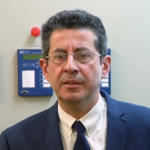
Date: d xxrd , 2023
Title: “Elaborating the concept of smart and sustainable ports”
Abstract: Sustainable decarbonization of the maritime sector has been one of the strategic targets set by the International Maritime Organization of United Nations as well as the European Union’s towards Climate Neutrality up to 2050. Alternative fuels are recognized, among others, as effective means to this noble end. Moreover, electrification of maritime transport seems to be the most readily available technology to provide electricity as an alternative fuel, wherever possible. Within this context, Shore Side Electricity Supply (SSES) or ‘cold ironing’ is the predominant tool to relieve ports and their surrounding urban areas from air pollution. The measure is further supported by the deployment of Renewable Energy Sources (RES) and Energy Storage Systems (ESS) both onboard and onshore. In this way, smart grids are integrated into ports transforming them into smart energy hubs via smart Energy Management Systems where ‘digitalization of power’ technology is fully exploited. Guided by the motto of IEEE “Advancing Technology for Humanity”, IEEE-SA has launched a dedicated Industry Connection Activity (the “Sustainable Maritime”, ICA-22-13) to trace all inter-related challenges raised and try to respond accordingly. The contribution will cover the aforementioned key aspects of the maritime-related project “Smart and sustainable ports”
Short bio: John Prousalidis was born in Athens (Greece) in 1968. He received his MSc (1991) and PhD (1997) degrees from the School of Electrical and Computer Engineering of the National Technical University of Athens (NTUA). In 2001 he joined the Academic Staff of the School of Naval Architecture and Marine Engineering of NTUA in the scientific field of “Marine Electrical and Electronic Engineering”, (currently Full Professor). He is the author/co-author of 4 books, about 100 papers, reviewer in IEEE, IET, Elsevier and IMarEST journals. He is a member of the Technical Chamber of Greece, IEEE, IMarEST, member of the board of the Hellenic Joint Branch of RINA/IMarEST, member of the Publication Supervisory Board of IMarEST Publications. Since April 2020 he is the vice-chairman of the IEEE Marine Power Systems Coordinating Committee (IEEE-MSCC), while since March 2021 he is member of the IEEE/EPPC Working Group on Energy and member of the IEC/ISO/IEEE JWG28 dealing with 80005 series of standards on ship-to-shore interconnections and since September 2022 head of the Industrial Connection Activity Sustainable Maritime of ΙΕΕΕ(ICA-22-013). His scientific interests include ship electric propulsion, All Electric Ship, green ships, alternative fuels, cold ironing, smart and sustainable ports, HVDC/HVAC submersible interconnections. He has participated in about 45 research projects (in 15 research projects he was coordinator). Currently he is the Director of the Marine Engineering Laboratory of NTUA.
——————-

